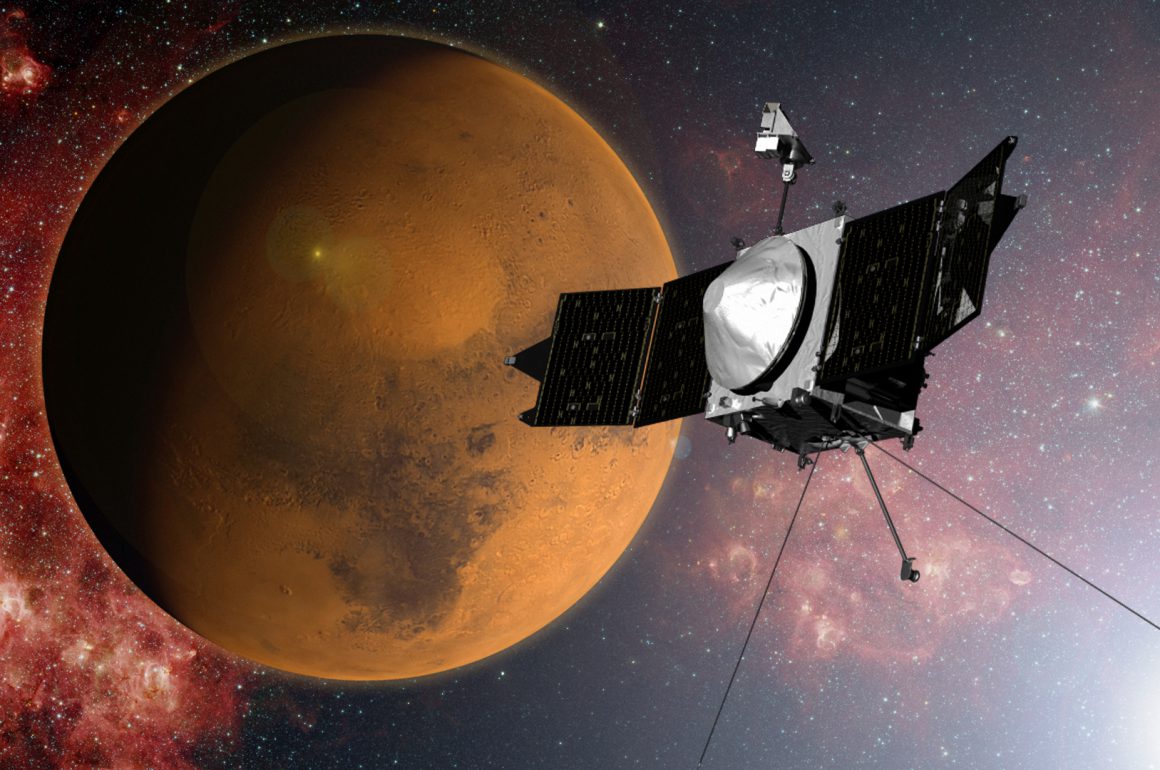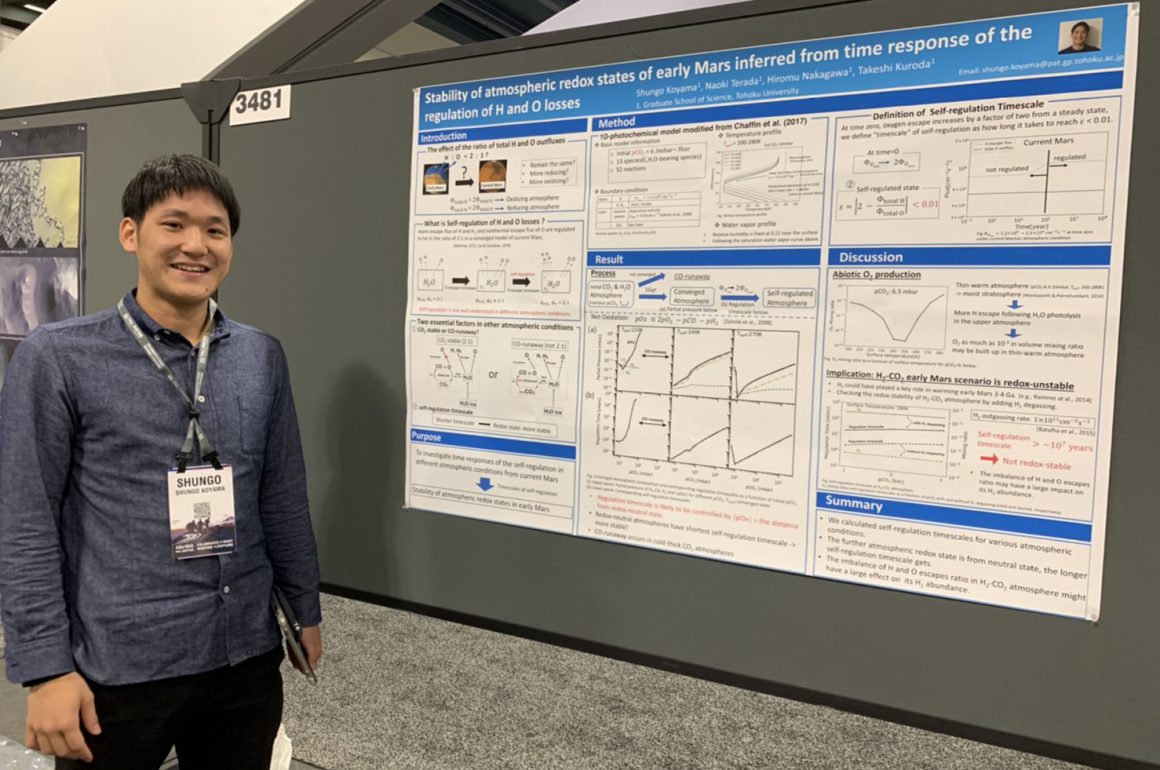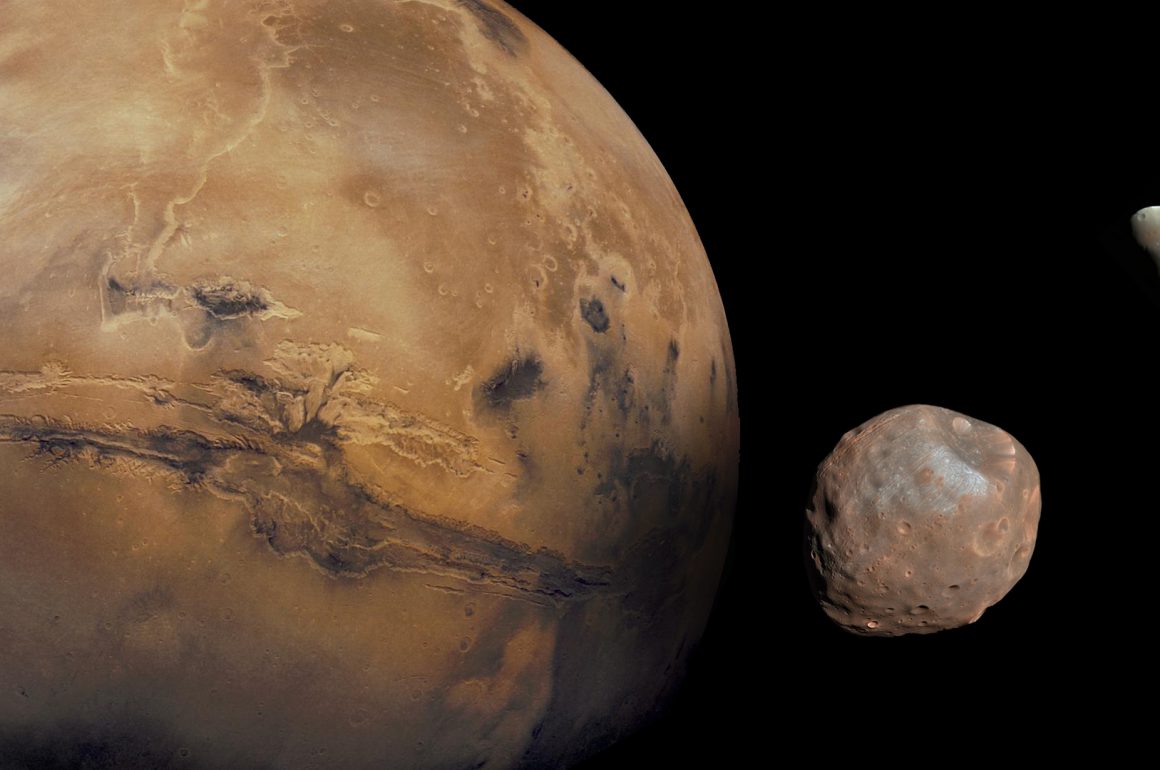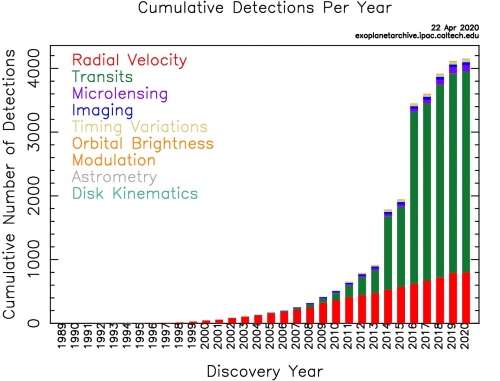Solar Energetic Particles (SEPs) are composed of protons, electrons and heavy ions with energies ranging from a few tens of keV to a few GeV, and are ejected into interplanetary space in large quantities in conjunction with explosions called coronal mass ejections or solar flares. During large flares, SEPs have been reported to penetrate to several tens of kilometers into the Earth’s atmosphere, increasing atmospheric NO2 and destructing the ozone layer (e.g., Seppälä et al., 2004; Rohen et al., 2005). In addition, SEPs are known to cause damage to spacecraft and detectors, and also to the human body due to...
How have the atmospheres of Mars and exoplanets (planets outside the solar system) changed in the past from the birth of the planets to the present? We have investigated about this point of view. On Earth today, there is an atmosphere with 1 atm (1bar, 100 kPa), which is composed of N2: 78%, O2: 21%, Argon, Carbon dioxide, and so on. The current atmosphere on Mars, however, is mostly carbon dioxide and has about 1/100 less than that of the current atmosphere on Earth. The atmosphere varies from planet to planet. So what was Mars’ atmosphere like in the past?...
There are various astronomical objects in our solar system, but their origins are not yet fully understood. One of the most interesting projects to solve such mysteries of stellar evolution is the exploration of asteroids, as represented by Hayabusa mission. On the surface of asteroids, the materials in the early stages of the solar system formation exist, but at the same time, solar wind and cosmic ray irradiation on the surfaces of celestial objects without atmospheres are causing changes in surface materials (space weathering). Therefore, in order to find out the origin of materials from surface materials, it is necessary...
In 1995, the first exoplanet was discovered outside our solar system. To date, more than 4,000 planets have been discovered outside our solar system. These numerous exoplanets are diverse and include planets the size of Jupiter orbiting very close to their stars and planets with elliptical orbits that are far from circular. 4,000 planets are statistically more or less likely to have a large variety of its size and mass. One can find a very small population of planets at a certain size range, so called “the Fulton gap”. A small number of planets at a certain size range means...
There are two satellites on Mars, Phobos and Deimos. There are two theories on the origin of these satellites: the capture scenario, which suggests that they were captured by the gravity of Mars; and the giant impact scenario, which suggests that they were formed by the accumulation of small objects that collided with Mars and scattered debris. It is still unclear which theory is correct, but we are particularly interested in the capture theory. Small objects captured on Mars evolve their orbits due to the dragging effect of the Martian atmosphere. When a celestial object is dragged, its orbit shrinks...
In order to elucidate the physics of phenomena that occur in planetary atmospheres, we are working on the atmospheric general circulation model, which are like virtual planetary environments reproduced on a computer. The best part of this model research is that you can reproduce a planetary environment with your own hands. For example, we can approach subjects such as “What happens if the rotation speed of a planet got slow down?”, “If the atmospheric composition is changed, does this affect on its atmospheric circulation?” which are basically difficult to validate in the real world. That is, by setting up a...
more
Archives
Tags
INFORMATION
Entrace Exam. info.
Do not hesitate to contact and freely visit our lab
Lab Booklet:
Dep. Booklet:
Entrace Exam. also found in Department of Geophysics web page






